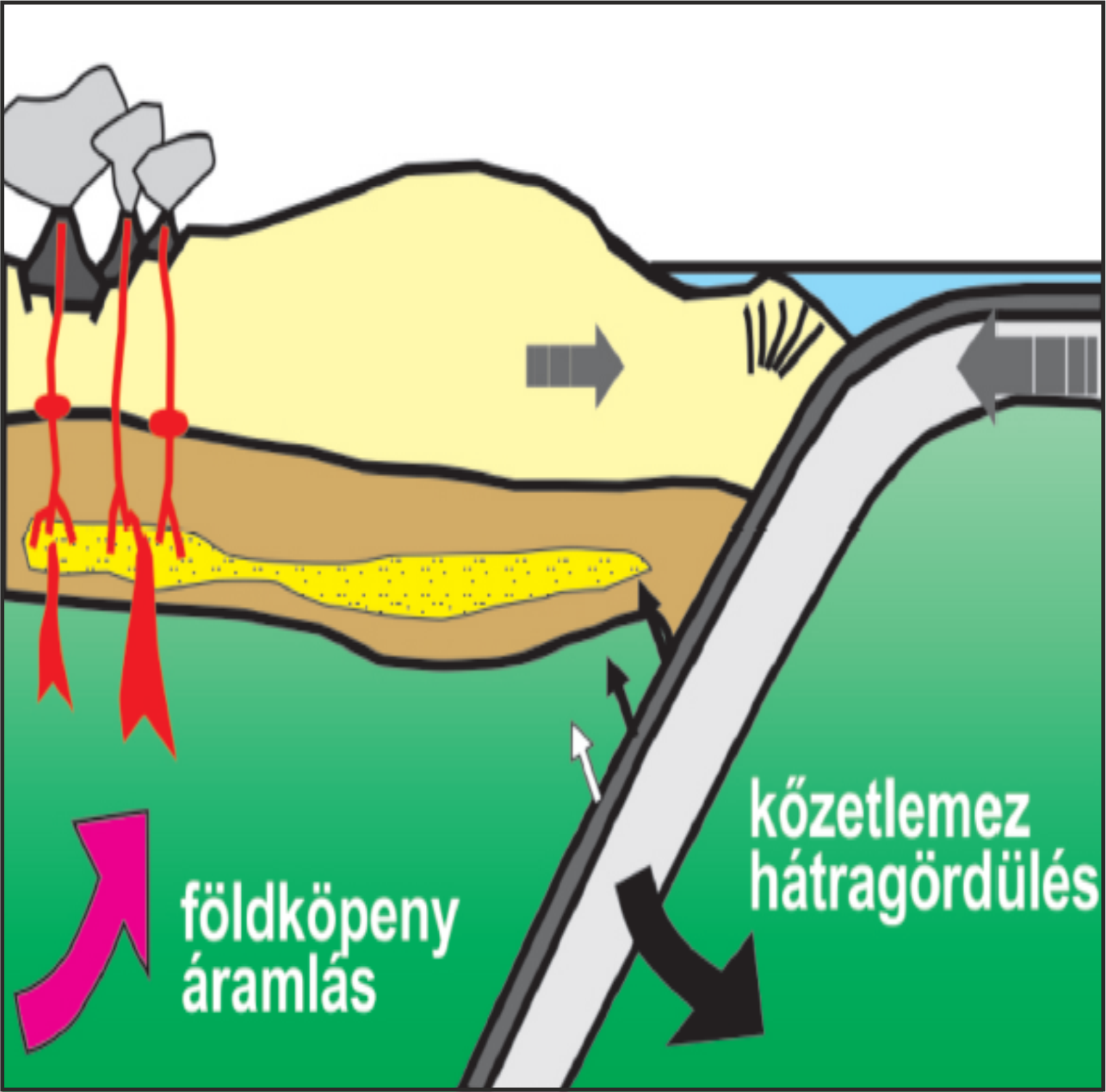The Neogene to Quaternary volcanism and its geodynamic relations in the Carpathian-Pannonian Region
Abstract
The Neogene to Quaternary volcanism of the Carpathian-Pannonian Region has a strong connection to the geodynamic evolution of the area. Professor Frank Horváth’s remarkable work and his personal attitude inspired us to place the volcanic activity and the magma generation in a wider plate tectonic context. The plate tectonic concept helps to understand better the areal distribution of volcanoes and the chemical composition of the erupted magmas. Professor Horváth played a fundamental role in the acceptance of plate tectonic processes in Hungary and he continuously searched explanations about the origin and development and the geological and geophysical nature of the Pannonian Basin and the surrounding areas even until the sudden end of his life. The scientific results for the last 50 years highlight that the plate tectonic concept cannot be applied routinely and integration of various fields of geosciences are necessary to obtain a better knowledge how the Earth works. The magmatic and volcanic processes should be considered from the source up to the surface, i.e. from the evaluation of the magma generation processes, through the emplacement of magma in the crust, the processes and their timescale in the magma storage system, the reason of magma withdrawal up to the mechanisms of volcanic eruptions. The advance of new geochemical techniques enabled obtaining a massive geochemical and geochronological data base on the erupted products and eruption events. This extensive data set yields a strong base to interpret the reasons of volcanism. Although the petrogenetic models are getting to be refined considerably, the emerging new questions give a perspective for further studies.
The Neogene to Quaternary volcanism of the Carpathian-Pannonian Region can be subdivided into four main groups: (1) eruption of silicic magmas; (2) calc-alkaline basalt-andesite-dacite-rhyolite volcanism; (3) alkaline basalt and trachyte volcanic activity and (4) eruption of potassic and ultrapotassic magmas. Extension and significant thinning of lithosphere and the continental crust played an important role in each of these volcanic activities. The onset of the rifting was coincided with eruption of andesitic to dacitic magmas at 19 to 20 Ma. This magmatism heated up the lithosphere allowing the subsequent emplacement of large volume of silicic magmas in the continental crust of the central part of the Pannonian Basin. The silicic volcanism between 17.5 and 14.4 Ma was the largest volcanic event in Europe for the last 20 Myr. The ignimbrite flare-up yielded more than 4000 km3 cumulative volume of volcanic material and several times larger amount of magma could have remained in the crust influencing strongly its thermomechanical properties. The new zircon U-Pb dates were used not only to determine the eruption ages, but also to constrain the time of two major block rotations (16.8-17.1 Ma and 15-16 Ma, respectively) and the lifetime of the magma storages. The extensive subvolcanic magmatic systems could exist for several 100’s kyr in the middle to upper crust. The volcanic ash deposits have a key-role providing a chronological framework and correlation tool in the Paratethys sedimentary sequences. The calc-alkaline volcanic rocks appear to follow principally the Carpathian orogenic belt. However, borehole data and seismic sections suggest that there are voluminous volcanic products and centres also in the interior of the Pannonian Basin. The northern segment of the volcanic belt along the Carpathians shows many differences compared to the eastern volcanic chain suggesting different origins. Volcanism at the northern segment occurred coeval with the major extension of the lithosphere. The primary magmas were formed by decompressional partial melting of the lithospheric mantle metasomatized by fluids during former (Paleogene or even earlier) subduction events. A marked change in the chemical composition of the erupted magmas can be observed around 13 Ma that indicates changes in the magma source regions. After ca. 13 Ma magma generation took place mostly in the upwelling asthenosphere leading subsequently to alkaline basaltic volcanism. On contrary, volcanism at the eastern segment occurred in a post-collisional setting, where tectonic processes appear to have controlled the magma generations and volcanic eruptions. Gradual migration of the transtensional tectonic processes led to younging of the volcanism towards south. The paroxysm of the alkaline basaltic volcanism was 5 to 2 Ma, well after the lithospheric extension. The temporal and areal distribution of the basalt volcanic fields as well as the petrogenetic modelling of bulk rock chemical composition imply derivation of the magmas by small volume melting of heterogeneous asthenospheric mantle. The triggering mechanism of the melting events could have been asthenospheric flow along the peripheral steep lithosphere-asthenosphere boundary due to the suction effect of the Pannonian Basin thin spot. The sporadic potassic to ultrapotassic magmas represent partial melts of lithospheric mantle with extreme enrichment of trace elements. Remobilization of such material occurred partly by decompressional melting during the main rifting period but the Quaternary potassic-ultrapotassic volcanism could be related to the heating by uprising asthenospheric material along the southern margin of the Pannonian Basin. The small volume magmas ascent along a marked west-east tectonic zone.
The main period of the volcanic activity in the Carpathian-Pannonian region occurred from 17 Ma to 10 Ma, however, dozens of volcanic eruptions are known also during the Quaternary. Interpretation of the volcanic products of the last eruptions suggests that the asthenospheric mantle beneath our area is still capable to produce magma. Furthermore, the geodynamic environment still enables magma ascent and thus, there are still potential for further volcanic eruptions even though the seemingly long quiescence period since the last volcanic event. The new challenging scientific questions yield further perspective for researches to understand better the present geological and geophysical nature and the development of the Pannonian Basin involving the long-lasting volcanism carrying on Frank Horváth’s deep scientific and spiritual heritage.
















